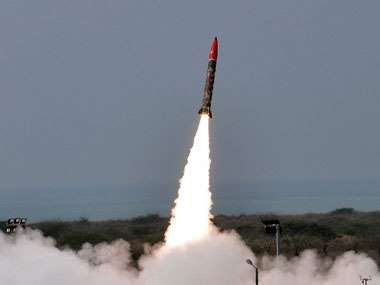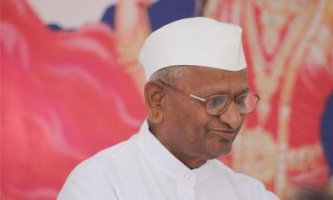September 7, 2015
ISLAMABAD, PAKISTAN – Islamabad's nuclear ambitions could see it go the way of the Soviet Union in the closing stages of the Cold War, or so suggests a report published recently by a couple of US think tanks: the Stimson Center and the Carnegie Endowment for International Peace.

September 7, 2015
ISLAMABAD, PAKISTAN – Islamabad's nuclear ambitions could see it go the way of the Soviet Union in the closing stages of the Cold War, or so suggests a report published recently by a couple of US think tanks: the Stimson Center and the Carnegie Endowment for International Peace.

A 27 August report titled A Normal Nuclear Pakistan proposes that in a manner similar to the way the erstwhile USSR's nuclear stockpile did nothing to address its socio-economic woes, Pakistan's growing nuclear arsenal does not 'address its internal issues'.
An argument can certainly be made that the purpose of nuclear weapons is not to address a far-from-strong economy, malnutrition (approximately 24 percent of the country's population is malnourished), electricity shortages (the country has a generative capacity of less than three-quarters of its power demand) and internal terrorism (see 2015 timeline here).
So, what is the purpose?
In an oft-cited interview with the Manchester Guardian in 1965, Zulkifar Ali Bhutto had said that if India built a nuclear weapon, "(Pakistan) will eat grass, even go hungry, but we will get one of our own".
His words have been prophetic to say the least. Over the past 15 years, India's economy has strengthened, particularly when compared with that of Pakistan. And although – as the report points out – India's defence spending has gone from $15 billion in 2000 to nearly $50 billion in 2014, as a percentage of GDP it has been on the decline.
During this period, India's conventional military capabilities have grown to the point where "the perception in Pakistan… is that growing conventional military asymmetry has eroded Pakistan's conventional deterrence to the point that it can only be offset by nuclear capabilities". So, the nuclear stockpiling is likely to continue.
What began as an effort to respond to India's nuclear capabilities has now expanded well beyond the realms of mere counterbalancing. Pakistan's arsenal comprises 120 weapons, while India's is estimated to be around 100.
Given that Pakistan has gone from playing catch-up to now out producing India in terms of nuclear weapons by a factor of four – at present rates, Pakistan has the ability to construct 'between 14 and 27' per year, whereas India can build 'between two and five' annually – the report suggests that within the next five to 10 years, Pakistan could have the world's third largest nuclear arsenal. After the US and Russia, of course, which own around 1,600 weapons each.
The Pakistan Ministry of Foreign Affairs was quick to respond to this postulation, with spokesperson Qazi M Khalilullah issuing a swift response. His statement on 28 August said:
"Pakistan has no desire to engage in nuclear arms race. We reject the report's assertion that Pakistan has the fastest growing nuclear arsenal as utterly baseless. Such reports have the effect of diverting attention from the exponential increase in India's fissile material stockpiles as a result of nuclear deals with a growing number of NSG (Nuclear Suppliers Group) countries and its destabilizing consequences for the region."
Nevertheless, as the report highlights, with neither India nor Pakistan willing to sign the Non-Proliferation Treaty (at least not until the other one does), NSG membership will be the pathway for international nuclear legitimacy for both South Asian countries. It goes on to suggest that if India joins the group before Pakistan, "New Delhi effectively would be able to block Islamabad's subsequent admission". And so, Pakistan's best hopes for membership hinge on following the Shanghai Cooperation Organization admission strategy – trying for simultaneous entry with India.
- But until this hypothetical situation fructifies, we are looking at a scenario where as New Delhi think tank ICWA had pointed out in 2013, that is marked by four distinct possibilities in the future.
- A small but real possibility of the next India-Pakistan crisis escalating to nuclear levels
- Pakistan may decide, as a matter of state policy, to extend a nuclear umbrella to a West Asian state (particularly in the aftermath of Iran's nuclear deal with the UNSC P5 and Germany)
- A 'hard-to-quantify' risk of nuclear theft from within the country
- A small chance that should Pakistan unravel, its nuclear assets will be 'seized by the army for political, strategic, or personal purposes'.
For now, as the Stimson-Carnegie paper suggests, Islamabad will be well advised to swap its "full spectrum" deterrence policy to a "strategic" one, by limiting its production of short-range delivery systems and tactical nukes. Additionally, it recommends a separation of Pakistan's civilian and military nuclear facilities, and finally, for Islamabad to sign the Comprehensive Test Ban Treaty without waiting for New Delhi to do so.
"None of these initiatives would impair Pakistan's successful accomplishment of strategic deterrence against India. They would, however, require difficult and fundamental adjustments to thinking about nuclear weapons and Pakistan's deeply ingrained habits of transactional bargaining," the paper says (emphasis added).
Courtesy: Firstpost







































































































